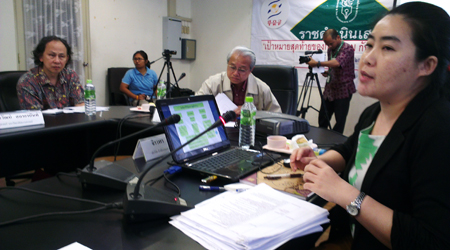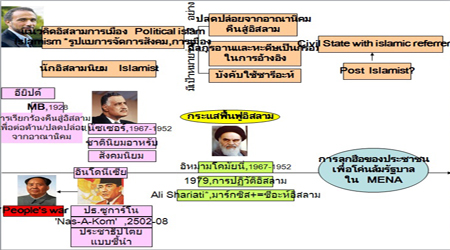Getting to know the BRN
The Thai Journalists Association in cooperation with the Office of Research Support Fund held a forum to discuss a research paper about the Barisan Revolusi Nasional (BRN) separatist group on August 25.

The research paper was presented by the author, Ms Chiraporn Ngarmlertsuporn, a researcher at the Office of Research Support Fund to the forum. The paper was the outcome of a ten-year extensive study and research of the unrest situation in the deep South between 2004-2013. About 100 people, mostly confessed insurgents, were interviewed by the author. In-depth interviews were conducted among 20 of the interviews were admitted of being BRN members and this process alone took about three years.
Besides the interviews, the author also studied and analaysed relevant documents such as the BRN’s charter B.E. 2518, training manuals for BRN’s youths which were seized by government forces in 2003 and 2011.
The objective of this research is to determine the ultimate goal of the BRN in different aspects, including politics, economy, justice process, religions and society. It is also intended to find out the BRN’s means to achieve their ultimate goal.
Ms Chiraporn said she had raised two main issues in her research work; firstly, whether the BRN has any process to justify the legitimacy of the use of force to achieve their goal and, secondly, how the BRN envisage the future regarding justice, political, social, economic and cultural aspects and whether the separatist group has any solution?
The author said that the BRN was founded in 1960 sharing China’s Mao Tse-tung’s revolutionary concept. The root cause of the southern unrest problem, according to the BRN, is the occupation of their ancestral territory by the Siamese imperialist.
She said that the BRN’s ultimate aim is to liberate their claimed territory and to set up an autonomous state through armed struggle in accordance with Chairman Mao’s revolutionary path.
"The heart of the BRN’s struggle is about the territory, Islam, faith and Malay Patani race," said Ms Chiraporn.

The author has divided the development of the BRN from 1960 to 2013 into three periods: the initial period from 1960 to 1984 which concerns the search for ideology and the line of struggle, the writing of the first charter and rules and production of publications for their recruits among others.
The second period from 1984-2004 was manifested by internal conflicts and power struggle. During this period, ustaz Karim emerged as a key figure who defied all the BRN’s original line of struggle. The BRN branched out into BRN Coordinate, BRN Congress and BRN Ulama and the separatist movement made clear its goal which is an independent statehood.
The third period from 2004-2013 is the period for a full-scale people’s war against the Siamese imperialist.
She disclosed that there are four sets of thoughts within the BRN: firstly, those who support peace process which are mostly the old guards and the political faction; secondly, the radicals who prefer extreme violence as their means of struggle; thirdly those who prefer an end to violence and lastly those who want to carry on the struggle but with less violence such as Hassan Taib group.
------------------------------------------------------------------------------------------------------------------------------------------------------
Captions :
1 Ms Chiraporn Ngarmlertsuporn
2 Three periods of the development of the BRN
